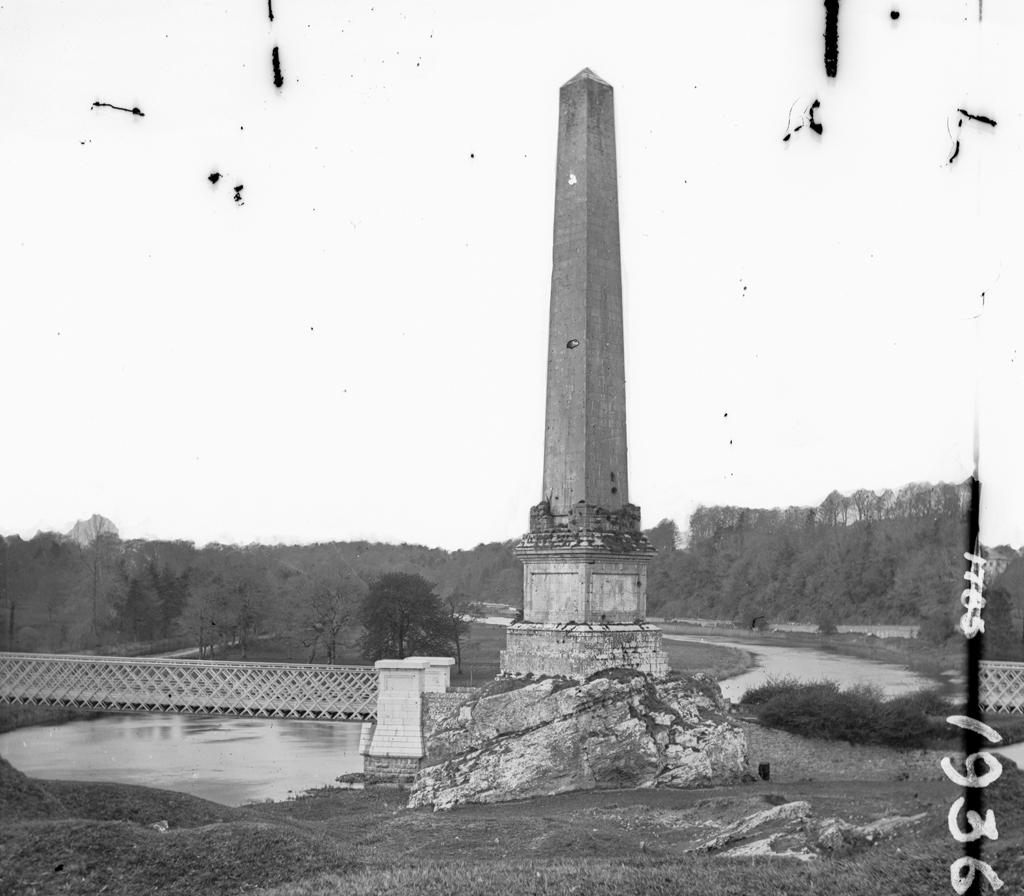Battle of Boyne landmark destroyed in targeted explosion
Louth, 3 June 1923 - An obelisk, erected in 1736 on the site of the Battle of the Boyne of 1690, was completely destroyed in a mine explosion.
The limestone granite monument, erected with the support of public contributions from ‘several’ Protestants across Ireland and Britain, had borne the inscription: ‘Sacred to the glorious memory of King William III.’
It also destroyed a roadway adjacent to the bridge pier was the force of its fall.
Having once stood 30 feet higher than Nelson’s Pillar, only its rocky base remains and a pile of masonry lies on the nearby road. Had the huge obelisk column fallen onto the bridge, the likelihood is that it too would have been destroyed. Even so, the completeness of the destruction suggests serious planning on the part of those responsible.

Ruins of the Boyne Obelisk (Image: Irish Life, June 1923)
Holes were apparently bored deep into the rock foundations of the monument for the land mines to be set inside. It is likely that time fuses were also used. A local farmer on whose land the obelisk stood has told of how he had been woken from his sleep by a man with a revolver and told to get dressed. Although he feared that he was going to be shot, Mr. Edward P. Heaney was assured otherwise and informed that he needed to remove himself for his own safety and that he was not to return until a quarter of an hour after he heard a big explosion. The deafening explosions -there were three of them - came at 3 o’clock in the morning on May 31st and shook the community of nearby Oldbridge.
The first stone of the obelisk had been laid in 1736 by Lionel Sackville, Duke of Dorset and Lord Lieutenant of Ireland. In the days when the Corporation of Drogheda was Protestant and Unionist dominated, visits to the obelisk would be held annually on July 1st, the anniversary of the Battle of the Boyne. More recently, in the years prior to the Great War, loyalists from Ulster made pilgrimages to the site on the ‘Twelfth of July.’ and while the loss of such an imposing landmark will be noticed by all who frequent the area, it will be most acutely felt by those espousing the orange tradition.
[Editor's note: This is an article from Century Ireland, a fortnightly online newspaper, written from the perspective of a journalist 100 years ago, based on news reports of the time.]





















